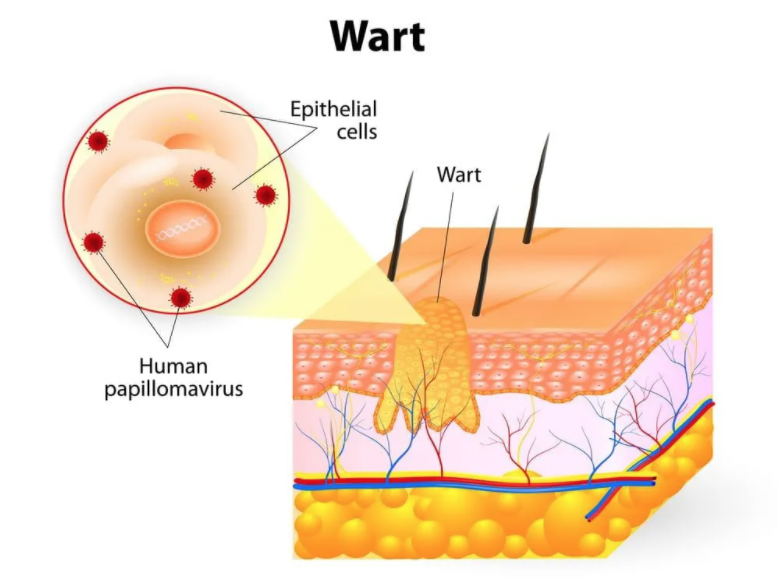Understanding Warts: Causes, Symptoms, and Treatment Options
Warts are benign growths that develop on the skin or mucous membranes, caused by infection with the human papillomavirus (HPV). These growths can appear on various parts of the body, including the hands, feet, and genital area. Warts may not become visible immediately after exposure to the virus, and it can take weeks, months, or even years for symptoms to appear. While not everyone exposed to the virus will develop warts, those who do may experience symptoms that range from mild to more severe. Some people may develop only a few isolated warts, while others may experience clusters of warts that can grow larger or form a cauliflower-like appearance. Common symptoms of warts include raised, rough patches of skin, small skin-colored bumps, or dark, speckled growths.
Did You Know?
Warts are caused by the human papillomavirus (HPV), a virus that is typically transmitted through direct skin-to-skin contact. There are over 100 different strains of HPV, and while many of these strains cause no symptoms, others are responsible for various types of warts, including common warts, plantar warts, and genital warts. Unlike some other viral infections that are contagious only during active outbreaks, HPV can be transmitted even when visible warts are not present, which makes prevention and monitoring important.
Frequently Asked Questions
Should I seek treatment for warts?
The decision to treat warts is often based on personal preference, as well as the location and severity of the warts. Treatment may be sought to alleviate discomfort, prevent spreading, or for cosmetic reasons. In some cases, warts may resolve on their own, but if warts are persistent, painful, or spreading, seeking treatment is recommended.
What should I expect during wart treatment?
Treatment for warts varies depending on their type, size, and location, as well as individual preferences. Common treatment options include topical medications that help to remove the wart or stimulate the immune system to fight the HPV virus. For more immediate removal, procedures such as cryotherapy (freezing), laser treatment, or minor surgical excision may be performed by a healthcare provider. It is important to note that while these treatments remove the visible warts, they do not eliminate the underlying HPV infection, and warts can recur over time.
How can I improve my treatment outcomes?
To improve your outcomes and prevent further warts from developing, avoid using over-the-counter treatments that are not specifically designed for the type of wart you have, as these may cause irritation or worsen the condition. It’s also important to follow any aftercare instructions provided by your healthcare provider to prevent infection and promote healing. Regular follow-up visits may be necessary to monitor for recurrence. Additionally, maintaining a healthy immune system and avoiding contact with known sources of HPV can help reduce the likelihood of developing new warts.


